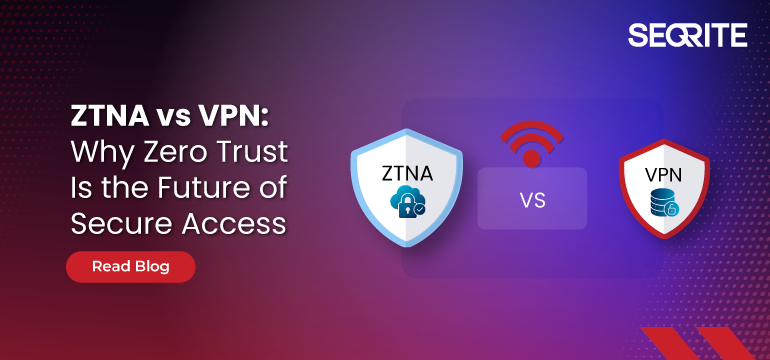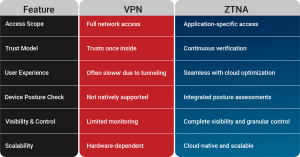Cyberattacks aren’t slowing down—they’re getting bolder and smarter. From phishing scams to ransomware outbreaks, the number of incidents has doubled or even tripled year over year. In today’s hybrid, multi-vendor IT landscape, protecting your organization’s digital assets requires choosing the top XDR vendor that can see and stop threats across every possible entry point.
Over the last five years, XDR (Extended Detection and Response) has emerged as one of the most promising cybersecurity innovations. Leading IT analysts agree: XDR solutions will play a central role in the future of cyber defense. But not all XDR platforms are created equal. Success depends on how well an XDR vendor integrates Endpoint Protection Platforms (EPP) and Endpoint Detection and Response (EDR) to detect, analyze, and neutralize threats in real time.
This guide will explain what makes a great XDR vendor and how Seqrite XDR compares to industry benchmarks. It also includes a practical checklist for confidently evaluating your next security investment.
Why Choosing the Right XDR Vendor Matters
Your XDR platform isn’t just another security tool; it’s the nerve center of your threat detection and response strategy. The best solutions act as a central brain, collecting security telemetry from:
- Endpoints
- Networks
- Firewalls
- Identity systems
- DNS
They don’t just collect this data, they correlate it intelligently, filter out the noise, and give your security team actionable insights to respond faster.
According to industry reports, over 80% of IT and cybersecurity professionals are increasing budgets for threat detection and response. If you choose the wrong vendor, you risk fragmented visibility, alert fatigue, and missed attacks.
Key Capabilities Every Top XDR Vendor Should Offer
When shortlisting top XDR vendors, here’s what to look for:
- Advanced Threat Detection – Identify sophisticated, multi-layer attack patterns that bypass traditional tools.
- Risk-Based Prioritization – Assign scores (1–1000) so you know which threats truly matter.
- Unified Visibility – A centralized console to eliminate security silos.
- Integration Flexibility – Native and third-party integrations to protect existing investments.
- Automation & Orchestration – Automate repetitive workflows to respond in seconds, not hours.
- MITRE ATT&CK Mapping – Know exactly which attacker tactics and techniques you can detect.
Remember, it’s the integration of EPP and EDR that makes or breaks an XDR solution’s effectiveness.
Your Unified Detection & Response Checklist
Use this checklist to compare vendors on a like-for-like basis:
- Full telemetry coverage: Endpoints, networks, firewalls, email, identity, and DNS.
- Native integration strength: Smooth backend-to-frontend integration for consistent coverage.
- Real-time threat correlation: Remove false positives, detect real attacks faster.
- Proactive security posture: Shift from reactive to predictive threat hunting.
- MITRE ATT&CK alignment: Validate protection capabilities against industry-recognized standards.
Why Automation Is the Game-Changer
The top XDR vendors go beyond detection, they optimize your entire security operation. Automated playbooks can instantly execute containment actions when a threat is detected. Intelligent alert grouping cuts down on noise, preventing analyst burnout.
Automation isn’t just about speed; it’s about cost savings. A report by IBM Security shows that organizations with full automation save over ₹31 crore annually and detect/respond to breaches much faster than those relying on manual processes.
The Seqrite XDR Advantage
Seqrite XDR combines advanced detection, rich telemetry, and AI-driven automation into a single, unified platform. It offers:
- Seamless integration with Seqrite Endpoint Protection (EPP) and Seqrite Endpoint Detection & Response (EDR) and third party telemetry sources.
- MITRE ATT&CK-aligned visibility to stay ahead of attackers.
- Automated playbooks to slash response times and reduce manual workload.
- Unified console for complete visibility across your IT ecosystem.
- GenAI-powered SIA (Seqrite Intelligent Assistant) – Your AI-Powered Virtual Security Analyst. SIA offers predefined prompts and conversational access to incident and alert data, streamlining investigations and making it faster for analysts to understand, prioritize, and respond to threats.
In a market crowded with XDR solutions, Seqrite delivers a future-ready, AI-augmented platform designed for today’s threats and tomorrow’s unknowns.
If you’re evaluating your next security investment, start with a vendor who understands the evolving threat landscape and backs it up with a platform built for speed, intelligence, and resilience.





